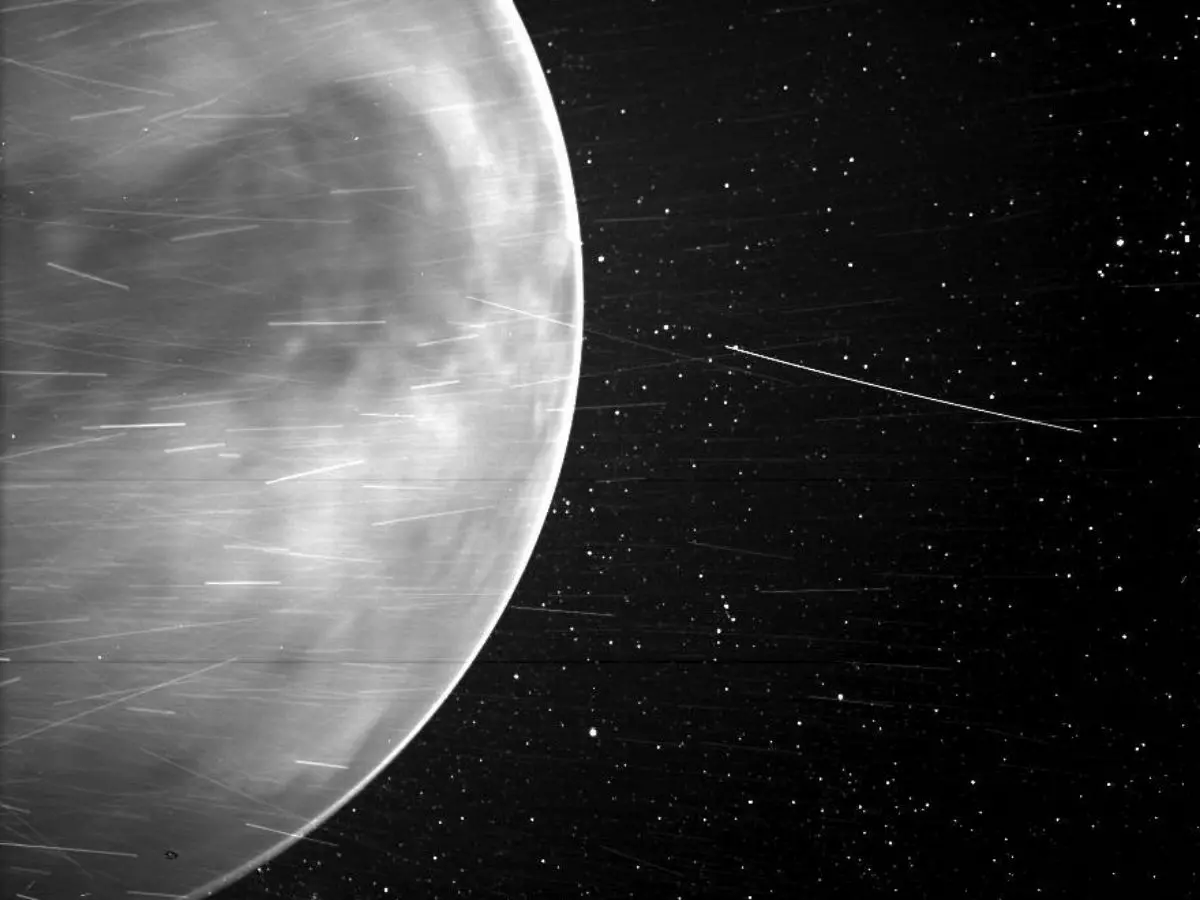NASA Venus Pic Shows Planet Glowing In The Dark, Bombarded By Space Rock
These rather incredible images were captured by WISPR aboard the Parker Solar Probe. WISPR stands for ¡®Wide-Field Imager for Parker Solar Probe¡¯ .

NASA has shared the image of our neighbour, Venus that was captured by its Parker Solar Probe. The probe has been on a mission to find the secrets of our star and has been on duty for over two years now. And during this time, it has also managed to share some really crucial data.
 NASA
NASA
The Venus probe captured the image of the planet back in July of 2020 however, it decided to share this crazy image only recently. This image shows the night side of Venus. The planet Venus is surrounded by several lines which might look like several asteroids entering the planet, but in fact, they¡¯re a combination of cosmic rays as well as debris and dust. The image was captured when the probe was really close to Venus at about 7,693 miles, which yes, is still a lot, but it's nothing in space.
Along with this, the image also showed a rather bright halo around the planet Venus that extended to its dark side -- something the scientists weren¡¯t expecting to see.
These rather incredible images were captured by WISPR aboard the Parker Solar Probe. WISPR stands for ¡®Wide-Field Imager for Parker Solar Probe¡¯ (yes we know the abbreviation doesn¡¯t make sense). This shoebox-sided module is designed to images from afar of structures like coronal mass ejections, but it captures images of planets just fine too -- something NASA scientists didn't think it could do.
NASA states in a blog post, ¡°This surprising observation sent the WISPR team back to the lab to measure the instrument¡¯s sensitivity to infrared light. If WISPR can indeed pick up near-infrared wavelengths of light, the unforeseen capability would provide new opportunities to study dust around the Sun and in the inner solar system. If it can¡¯t pick up extra infrared wavelengths, then these images ¡ª showing signatures of features on Venus¡¯ surface ¡ª may have revealed a previously unknown ¡°window¡± through the Venusian atmosphere.¡±
 NASA
NASA
Researchers behind WISPR also have some explanation surrounding the crazy halo glow of the Venus planet. They believe that it¡¯s being caused due to charged oxygen atoms in the planet¡¯s atmosphere that moves to the night side of the planet. Also, it seems more emphasised here since it's darker here.








